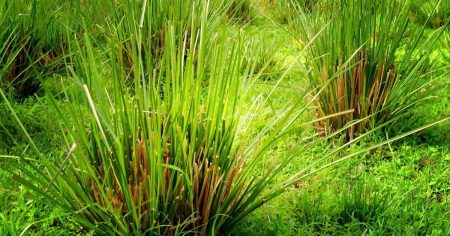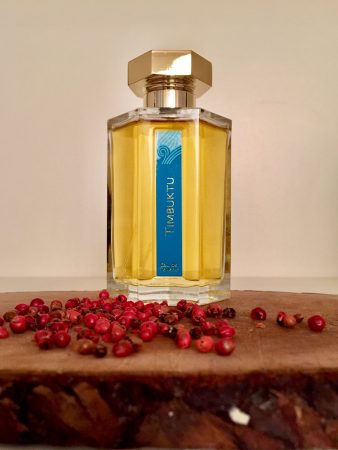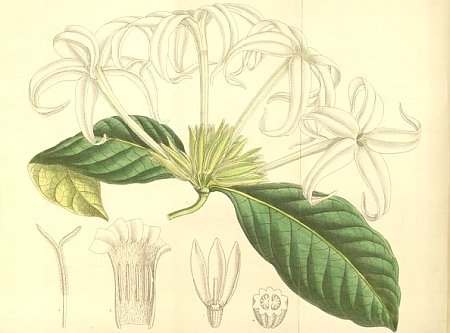
L’Artisan Parfumeur Timbuktu ad circa 2004
Love and fragrance have been linked for a millennia. Both can catch us unaware and we become ensorcelled. Did you know the youngest olfactory family of woods (according to the official classification from the Societé Française des Parfumeurs i.e.), appeared in context of love when in 1957 Carmen de Tommaso (a.k.a. Madame Carven) created Vetiver de Carven for her husband, the first vetiver solinote. It is only in the last decades that woods centric perfumes have been explored by perfumers… and used in invocative ways (Serge Lutens Feminité du Bois focused on cedarwood).

Vetiver is actually a root, not a wood © unsplash apped by MC
Vetiver immediately became a staple in the masculine fragrant wardrobe for its authentic bracing dryness, and in 1978, at the dawn of niche perfumery, Jean Laporte gave his interpretation with L’Artisan Parfumeur Vetiver dipping the iconic root in bittersweet coffee and lavender. In the 21st century L’Artisan Parfumeur debuted some of the most innovative and memorable interpretation of a woody bouquet ruled by Vetiver. In 2004 L’Artisan Parfumeur’s former Creative Director Nick Steward now of Gallivant) worked for the second time with Master Perfumer Bertrand Duchaufour (the first creation for the brand was Mechant Loup) to compose a perfume inspired by the intense scents of West Africa and the traditional art of Wusulan. Once more this precious root was the main ingredient of a love potion.

L’Artisan Parfumeur Timbuktu with pink pepper by Ermano©
Wusulan is an ancient art, one that has been handed down through the generations from mother to daughter as an aid to seduce and keep your beloved. Monsieur Duchaufour translated the Malian art of making perfume and love spells by juxtaposing the playfulness of mango and the spicy radiance of pink peppercorns against a bouquet of smoked woods. Blurred by the exotic sensuality of Karo Karounde (for what I know officially listed as a note for the first time), Timbuktu reinvented the masculine wood par excellence, vetiver moving it away from the rooty or barbershop territory and turning it into smoking hot love witchcraft. That’s why L’Artisan Parfumeur Timbuktu is a game-changer and a Modern Masterpiece.

Perfumer Bertrand Duchaufour 2008 courtesy of the perfumer
Issued as part of Les Voyages Exotiques Collection along with Bois Farine (Jean-Claude Ellena, 2003) and Dzongkha (Bertrand Duchaufour, 2006), Timbuktu is built on a classical blend of dry woods, with vetiver, sandalwood and patchouli forming a beautiful foundation. Pink peppercorns and grapefruit lend an engaging freshness. Yet surprisingly, this vividness expands further as the composition dries down with the unconventional minty tanginess of mango, wood sap and sweet pine resin.

Karo-karounde illustration by Matilda Smith (1894), Royal Botanic Kew Gardens
L’Artisan Parfumeur Timbuktu changes on the skin like a chameleon from spicy incense to smoky woods, with the mysterious Karo Karounde, an indigenous West African flower lending a jungle-like quality to the perfume with facets of sharply green violets, leathery carnation and overripe fruits. It also adds an intensely animalic and sensual character the way vanilla pods and chocolate raw beans do. The final dry down of Timbuktu evokes the human presence of cumin conveying the sweet and salty intimacy of a naked embrace.
As L’Artisan Parfumeur was acquired by the International Group Puig in 2015, and as many fragrances underwent repackaging and reformulation. L’Artisan Parfumeur Timbuktu is no exception and the current version is not the same. It’s worth sampling as you read this writing.
L’Artisan Parfumeur Timbuktu includes notes of pink pepper, green mango, coffee bush flower, karo karounde, cumin, myrrh, patchouli, vetiver, musk, incense, and vanilla.
The writing is based on a personal bottle of vintage L’Artisan Parfumeur Timbuktu, opinions as always, my own.
Ermano Picco, Editor and Perfume Expert
I once asked M. Duchaufour what makes a great perfume…his answer, “I am sure of one thing; time is the best judge of a fragrance”. And Timbuktu is, still, after 17 yrs, one of his finest fragrances for the House-Michelyn Camen, Editor-in-Chief
Please see CaFleureBon Modern Masterpieces here
Follow us on Instagram @cafleurebon @magnificent
